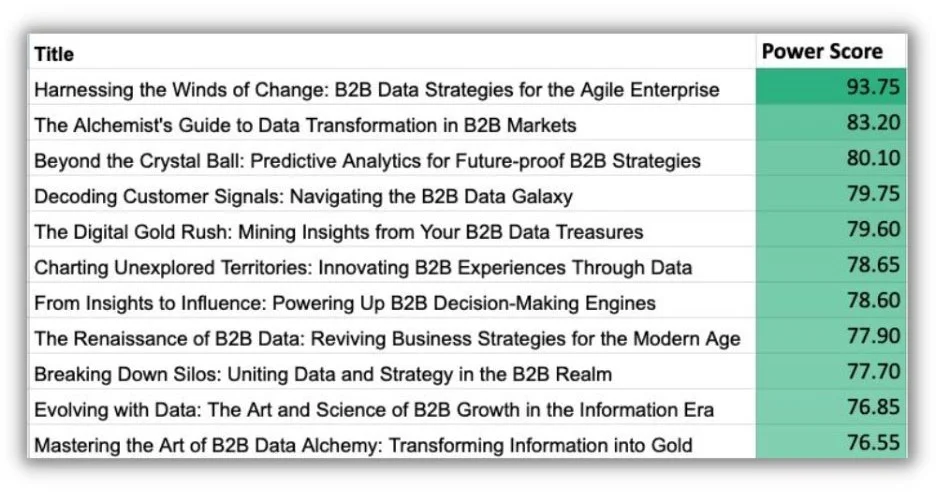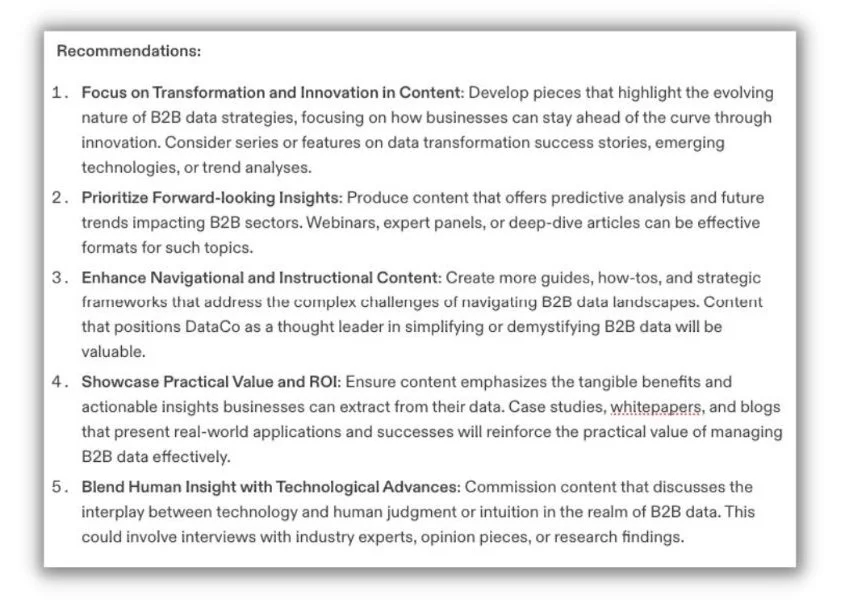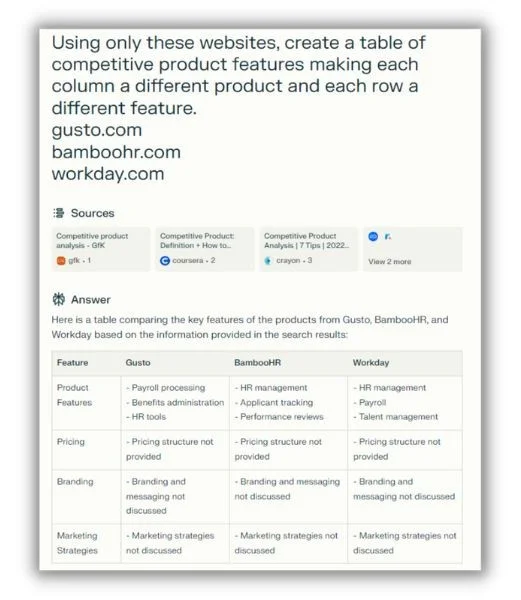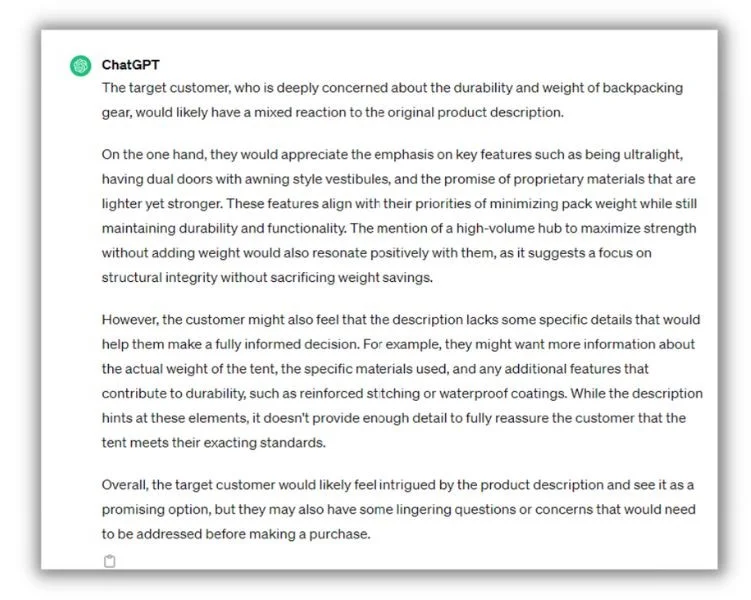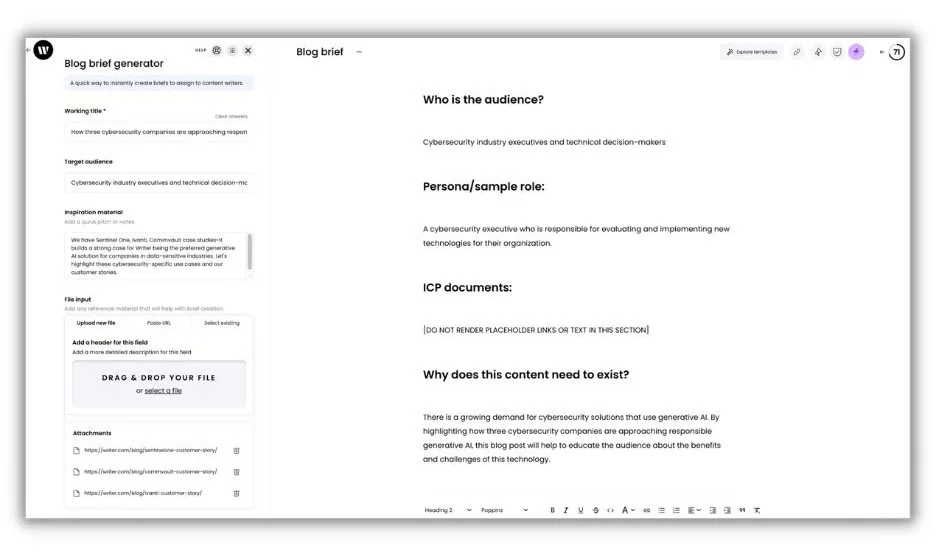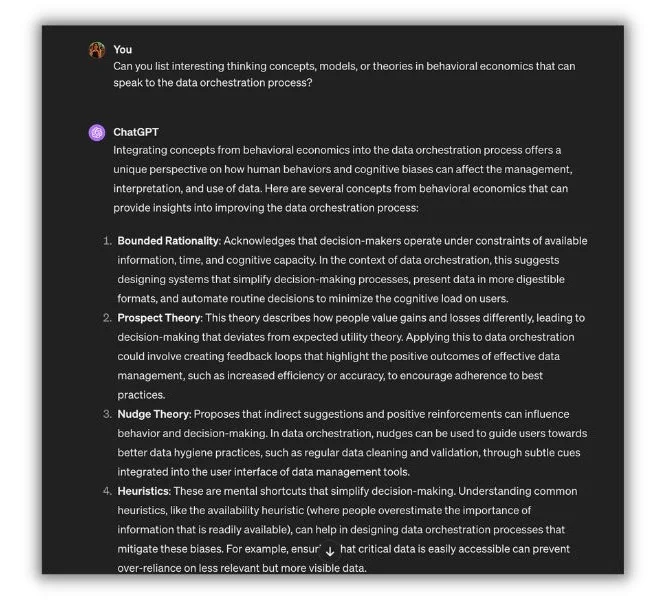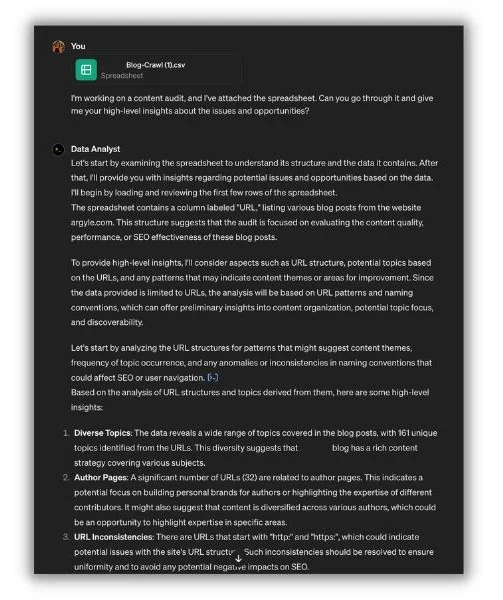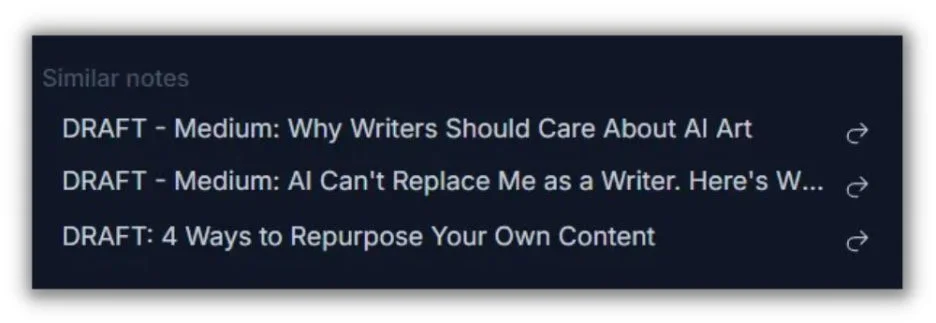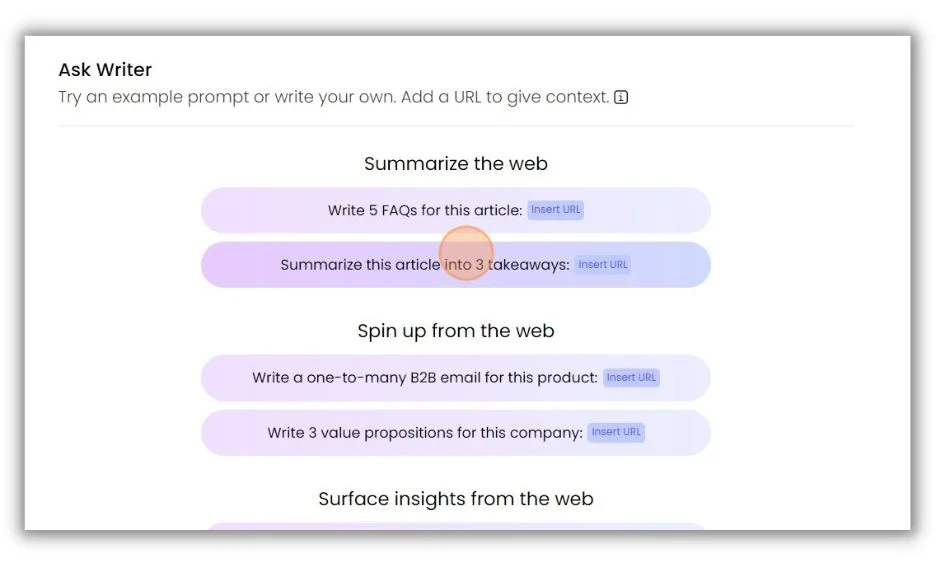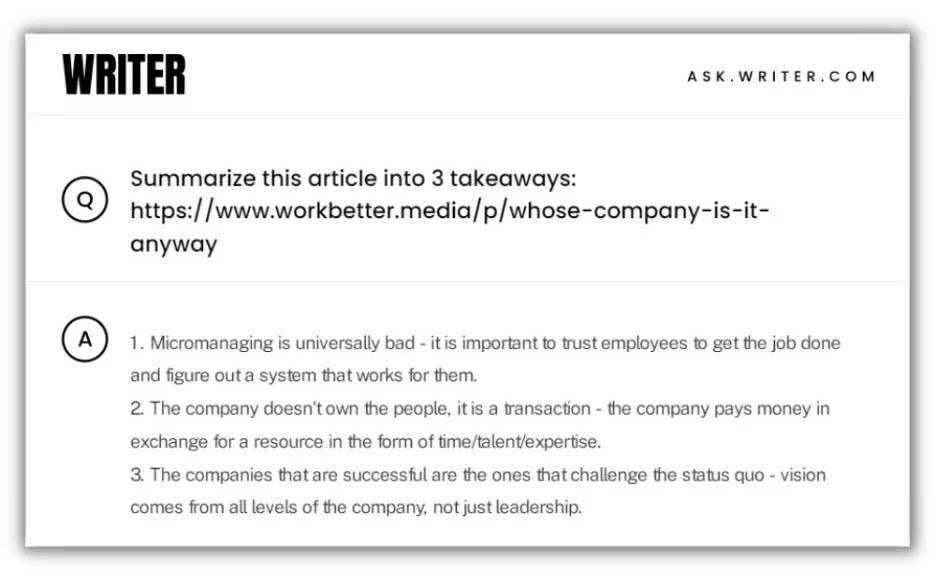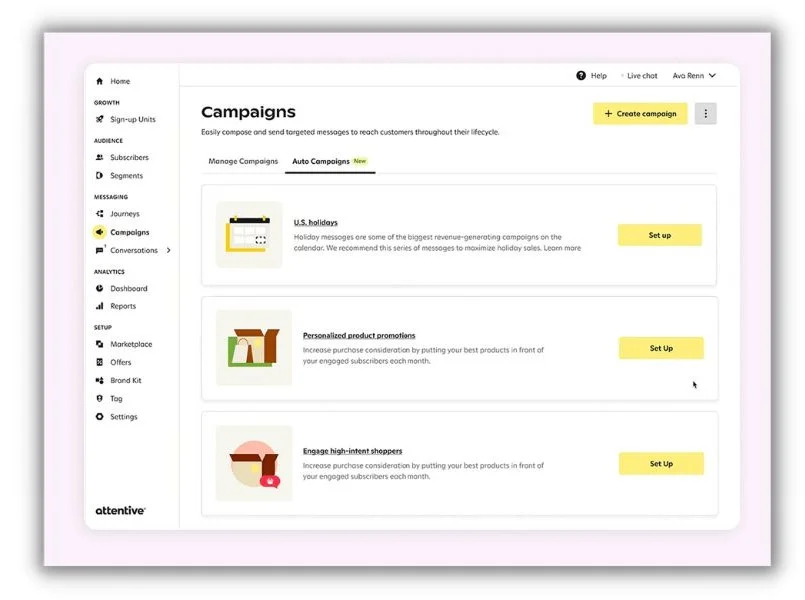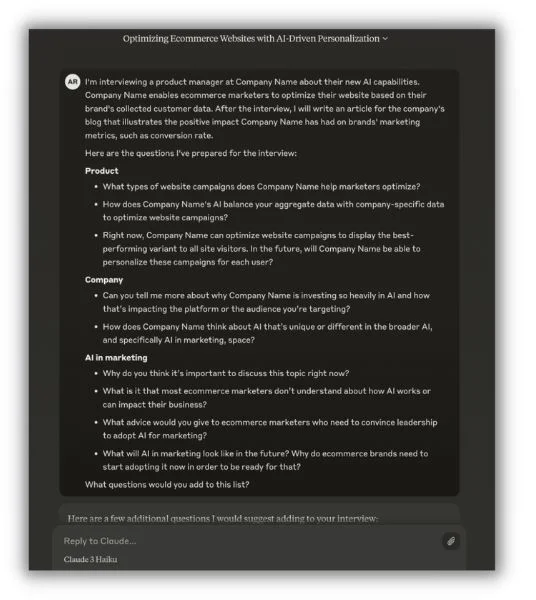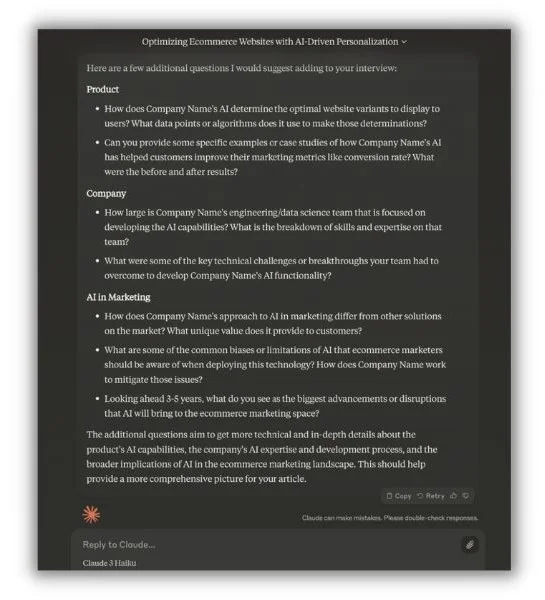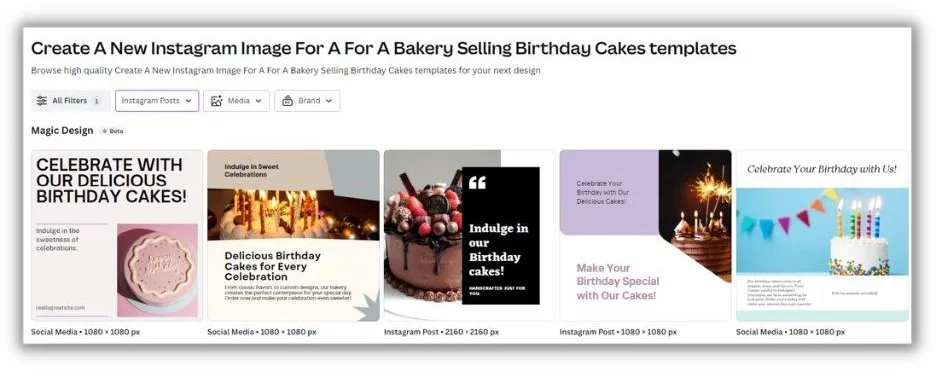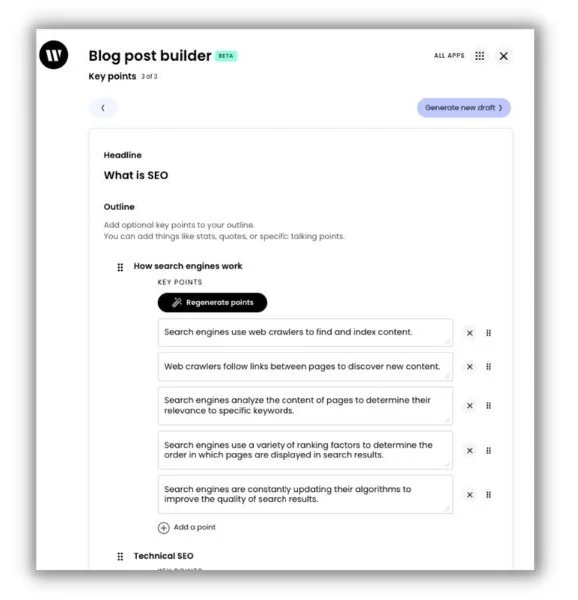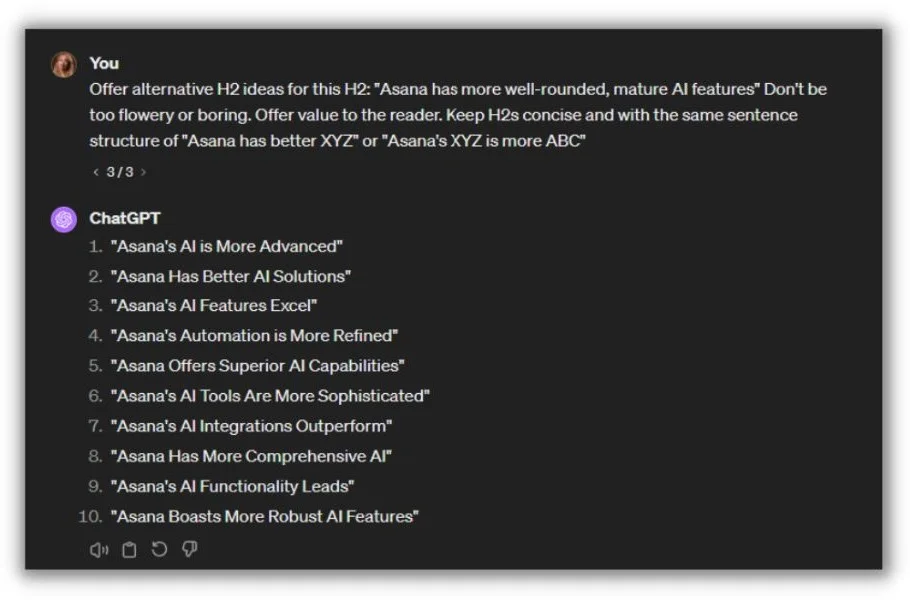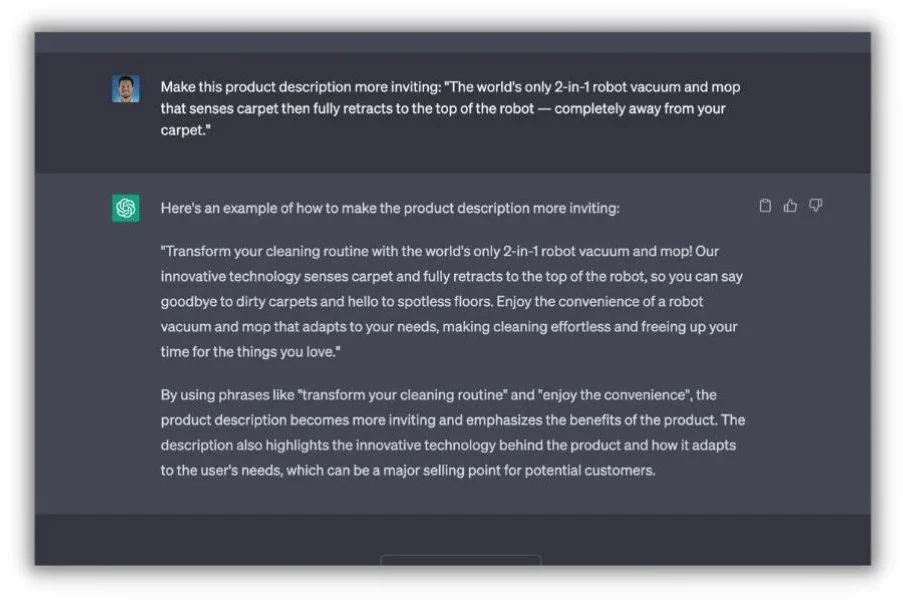Does your head spin when someone mentions artificial intelligence? It’s understandable. LinkedIn and Twitter (fine…X) are rife with newly minted AI experts and tech bros sharing their latest 27-step process for gaming algorithms and automating entire marketing programs.
That’s not useful for most ground-level marketers.
What can help? Knowing which everyday marketing challenges the technology can solve for us right now is a great start. So, I reached out to several marketers I admire to see how they’re using AI in marketing.
The response was outstanding. They shared specific, tactical examples, plus the prompts and AI tools they use—everything you need to repeat their processes.
Contents
? Download this handy, free Guide to AI in Marketing for more tips and strategies.
14 ways the pros use AI in Marketing
Interestingly, no one said they were using AI to spin up entire ready-to-publish articles. But they are using AI tools to get out of writing ruts, analyze data, inform strategy, and automate marketing flows. The use cases were way more diverse than I imagined.
1. Pull insights from past campaigns for future strategy
Knowing which ad or blog post generated the most leads is easy. It’s harder to learn why they worked so you can double down on their success. Curt Woodward, Director of Content at ZoomInfo, devised a genius way to get Jasper, a generative AI copywriting tool, to help him figure it out.
Curt started by ranking a list of ZoomInfo’s content titles by a “power score” comprised of three weighted KPIs. Here’s a mockup of that list with fake data he uses for demonstration purposes.
Next, he fed the list to Jasper, along with a prompt asking the AI to identify commonalities that would inform future content campaign choices.
His prompts looked like this:
“Act as a marketing analyst. I am going to give you a list of content titles with corresponding numbers, which represent a value score we use to determine top content. Higher scores are better.”
“Compare the content titles to find common themes, keywords, ideas, and approaches among the top-scoring titles. Suggest ways to replicate successful content packages.”
“Jasper, as a tool, often asks for more information about what you want the output of your prompt to look like,” Curt explained. “In this case, I gave it instructions about format, use of the memo, etc.”
Here’s the follow-up prompt Curt gave Jasper:
“I want to come away with a memo that summarizes our best themes, formats, and concepts for our future marketing content campaigns. Give us ideas and frameworks to use going forward.”
Based on the data and prompts Curt gave it, Jasper created a list of recommendations with detailed ideas for future content.
Curt qualified the fairly obvious results from this example by pointing out that it was fictitious data. He said you get a more insightful analysis when you feed it accurate information. Next up, he plans to get Jasper to proactively rank and sort the content assets by the power score, which will make the process even faster.
But for now, Curt suggests trying this tactic with other marketing copy. “You can easily adapt this for any measurable marketing asset. Ad and landing page copy comes to mind. Just rank them by whatever KPIs are important, and ask the AI to find themes you can use in future campaigns.”
? Free guide >> 135 of the Best Words & Phrases for Marketing With Emotion
2. Complete competitive analyses
Completing a competitive analysis is a core function for just about every marketer. The hard part is synthesizing competitive product features and brand positioning for multiple competitors.
Celia Quillian is an MBA and product marketing leader who’s also an influential voice in the artificial intelligence space through her channel @smartworkai on TikTok and Instagram. She uses ChatGPT Plus (the paid version) to quickly curate competitive intel.
“ChatGPT Plus’ web browsing feature is fabulous for competitive analysis,” she said. “In my prompts, I provide the links to competitor websites, asking that it only source from these sites for its competitive intel, and have it craft a table comparing the features of different market competitors.”
The free version of ChatGPT can’t surf the web. I tried a quick version of the request on perplexity AI using three HR software competitors.
Obviously, this would need some additional prompts to make it useful. But Celia said AI is really good at that. “Generative AI models like GP-4 have lengthy ‘context windows,’ meaning I can continually ask follow-up questions,” she said. “My combined prompts and answers only build on each other, helping me to learn, brainstorm, and find answers more efficiently.”
For context, Celia said ChatGPT Plus can “remember” the context of about 100 pages of written text.
3. Roleplay for customer sentiment
AI can’t replace humans, but it can pretend to be one. Celia said that’s a valuable feature of the technology. “ChatGPT is great at playing pretend, so when it comes to thinking of how I might solve a problem for a customer, I can ask ChatGPT to roleplay as my ideal customer persona.”
I gave this a try with the free version of ChatGPT. I fed the AI a description of a backpacking tent that focused on its weight, then entered this prompt:
“Pretend you’re the target customer for a company that sells outdoor camping gear. You’re very concerned about the durability and weight of the next backpacking tent you buy. How would you feel about this product description.”
Here’s what I got back.
This was a simple example, but ChatGPT spotted the durability gap and suggested we add more specificity. Not bad.
“It’s never as good as talking with a real customer,” Celia added. “But it can make for a great stand-in when I’m in the early phases of research and ideation.”
4. Produce internal project management assets
One of the best applications of AI is to automate repetitive marketing tasks. That’s a common way Alaura Weaver, Content Marketing & Community Leader at Writer, uses it.
“I use Writer to spin up internal project management assets instantly—stuff like writing briefs, editing checklists, and creating content promotion plans,” she said. “That way, I don’t have to start from scratch with routine tasks.”
Alaura detailed how she creates briefs since that’s a common task for many marketing team leaders and those who work with freelancers.
“I built a custom ‘brief generator’ app in our no-code Writer App Studio,” she explained. “All I have to do is give a working title, indicate what audience the piece is for, and paste or upload source material (like an executive LinkedIn post, research article, or dev documentation). The app generates content briefs that align with our business goals and content strategy (which I baked into the prompt that powers the generator).”
Alaura said that using AI this way speeds up the entire editorial process, freeing up bandwidth for high-level tasks.
“The output follows a consistent format, so I can easily plug it into docs without much editing,” she said. “It means that my writers have what they need to get started on assignments a lot faster, and it means I have more time to focus on fun, creative, strategic work like producing our Humans of AI podcast.”
5. Find thinking models for thought leadership content
The best thought leadership content has a unique, personal, and interesting point of view. It’s not the typical wheelhouse for robotic writing.
But Anjana Vasan, a Senior Copywriter and Content Strategist at Block Club, found an unexpected way to improve thought leadership content with AI. She asks ChatGPT for thinking models or academic concepts related to her topic.
“Using AI this way, I can develop a unique point of view or think of an interesting metaphor and connect the dots to the topic or the person I’m writing for,” Anjana said. “All while still keeping their experience and expertise in mind.”
The great thing about this tactic is that it works with just about any AI writing assistant or even generative search platforms like Perplexity AI.
6. Analyze data for SEO audits
Anjana showed us another way AI can help analyze large blocks of data—this time for SEO audits.
Here, she asked ChatGPT to review a spreadsheet of content links.
“Usually, I dig in further with additional questions or prompts to draw the insights I’m looking for,” she said. “Or I ask ChatGPT to organize the data so I don’t spend my time on administrative tasks.”
Here are some of the follow-up prompts Anjana uses:
- “Based on the available data, can you identify the top 10 pieces of content?”
- “Have you noticed any themes or overarching topic categories in all the content?”
- “Can you edit the spreadsheet to include only the URL, date of publication, title, meta description, and word count and remove the other columns?”
She warned that this tactic only works with the right information and that any AI output should be double-checked.
“The results are only as good as the quality of your data, so ensure you include the right types of information in your file,” she said “And remember to validate the information since you may not always get the right insights if you rely completely on ChatGPT.”
7. Link ideas while you write automatically
If you have folders full of half-complete ideas and clever copy that are hard to find when you need them, Anna Burgess Yang feels your pain. “I publish a lot of work online and have thousands of notes from articles I’ve read, podcasts I’ve listened to, and even my own writing. In the past, I’ve relied on tags or categorization in note-taking apps to connect topics or ideas.”
Anna is a prolific freelance content marketer and a self-described workflow automation geek. She uses an AI tool called Reflect to surface related notes based on the text she’s writing. So, mid-draft, Anna will see categorized suggestions from her network of documents.
Our human brains are wonderful, but they’re not always great at quickly recalling a specific point buried amongst thousands of others. AI is ideally suited for the job. “This has become an invaluable part of my note-taking since AI can pull ideas together that I may have overlooked or not considered,” Anna said.
8. Repurpose long-form content for social media posts
Social media marketing is one of the best channels for brand awareness and lead generation. But it’s also a never-ending grind that requires a constant flow of content ideas to stay relevant.
Anna came through with another AI tip: a way to pull social media posts from the content she previously produced. “I’ve already done the hard work by crafting long-form content. Why not use AI to speed up the process of creating social posts?”
Anna uses a content summarization feature in the generative AI platform Writer to do this.
After dropping in the URL of her source article, Writer comes back with a brief synopsis of three key takeaways.
Next, she pastes the takeaways into Trello, the tool she uses for content planning. Those snippets inspire social posts when she’s ready to write them.
Why not just ask AI to write the posts? “You can try and use AI to write social posts for you, but I’ve found that it never sounds like me,” Anna said. “I’d rather use key takeaways as a launching pad and write my own social posts.”
? Get copy-and-paste social media posts you can customize >> Social Media Calendar Template
9. Create customized SMS and email marketing campaigns
Customer journeys are like choose-your-own-adventure stories with dozens or hundreds of potential flows. Personalizing those journeys requires a lot of manual work.
Angela Rollins, an ecommerce-focused content marketer and strategist, suggested a tool called Attentive AI as a solution. “Instead of manually creating all the different flows a brand normally would and layering on segments, Attentive AI basically personalizes SMS and email messages at scale based on all the data a brand has on its customers,” Angela explained.
This screenshot from Attentive AI’s website shows the campaign creation workflow.
The tool continually learns from the highest-performing marketing interactions to create multi-channel campaigns. It can also build refined segments from your pool of subscribers and dial in the best time to send messages for the highest rate of response.
By using AI, you can “send each person the right message at the right time depending on where they’re at in their relationship with the brand,” Angela said.
10. Prepare an interview question list
Here’s an exciting use of AI’s ability to riff off an existing text. Angela gives the AI assistant Claude outlines and asks it to fill out question lists for subject matter expert interviews.
Here’s an anonymized version of a conversation Angela recently had with Claude.
Claude replied with some pretty insightful new questions to add to the list. It even categorized them like Angela did in the original structure.
Once the interview is over, Angela goes back to Claude to help pull out the most interesting bits. “It’s so helpful to just plug large amounts of content into Claude and ask it to summarize for me. That helps me find specific answers from a long interview.”
11. Improve design elements in email headers
Marketers who aren’t necessarily graphic designers are often called on to produce visuals for the assets they manage. When Ceillie Clark-Keene, Head of Marketing & Communications at Building Ventures, finds herself in this position, she turns to AI.
“I’m not a designer, but I do put together the occasional email header,” she said. “I’ve started experimenting with the AI features in Canva and Designs.ai to improve design elements or generate graphics.”
I gave it a try on Canva. I had trouble creating a new newsletter design (I found plenty of pre-made templates), but with a few clicks, I got a handful of post designs that were properly sized for Instagram.
“These tools help me create better graphics for those times when outsourcing a professional isn’t in the budget or timeline,” Ceillie said.
A word of caution is warranted. Review AI image generators closely. They can sometimes go off the rails and create less-than-ideal visuals.
12. Build article outlines quickly
I’ve written hundreds of articles, and without fail, creating the initial structure is the hardest step. Once you have the logic and framework down, it’s just a matter of filling in the blank spots.
Will Ruzvidzo is a seasoned B2B SaaS content marketer who’s worked with global brands for over 10 years. Will explained how he uses Writer to overcome outlining obstacles.
He starts by entering a straightforward headline. “With just a few clicks, I can generate a well-structured outline for my blog post, complete with relevant subheadings, key points, and supporting examples.”
With the “bones” in place, Will customizes the outline to “add my own voice, insights, and creativity into the blog post.” Writer also gives Will AI-powered copy suggestions as he writes.
He said the time saved lets him focus on crafting captivating introductions and compelling arguments—the types of things that make human-written content stand out.
13. Write craftier subheadings
Subheadings are among the most important aspects of a blog page. They help readers skim and search engines crawl articles more effectively. That’s why Hsing Tseng, a freelance content writer, editor, and strategist, uses ChatGPT as a sounding board when she writes subheadings.
“AI tools can brainstorm much faster and more imaginatively (sometimes) than I have the creative bandwidth to do,” she said.
Here’s an example prompt Hsing shared.
Notice how she adds tone and structure instructions to the prompt, like “don’t be too flowery” and “keep H2s concise.” Hsing said the more specific you can be, the better your output will be.
It’s not just about banging out better section titles, though. The AI suggestions Hsing gets incite new directions for a post she hadn’t considered yet. “I’m able to explore a broader range of angles, picking and choosing wording that might align better with the framing of my article,” she noted.
14. Scale product descriptions and ad copy
A single ecommerce website can have hundreds of products, each needing a concise description and advertising copy.
Gordon Donnelly, a multi-discipline marketer and SEO expert, said that’s one of his favorite use cases for AI. “I have a couple of affiliate/dropshipping sites, and ChatGPT is great for creating product descriptions and ads.”
Here’s an example of how Gordon prompts ChatGPT to zhuzh up a bland product description.
The key, said Gordon, is that you need to coach your AI tool with the right prompts to get it to say something interesting and useful. As he previously wrote, when prompting an AI tool, you should:
- Be specific
- Provide all the relevant information
- Follow up
The future of AI in marketing
We’re just scratching the surface of what AI can do for marketers. Current trends seem to be headed towards more automation, more complex customer-facing AI tools, and analytics that predict as well as review.
Celia also sees a comeuppance on the horizon for marketers trying to game the system with AI.
“There’s an ethical issue behind passing off AI-generated writing as your own, which is unfortunately becoming more popular a pastime as people chase a quick buck or a shortcut,” she said. “If you were to ask ChatGPT to generate the content of a blog post packed with SEO keywords, it would certainly be possible. But you risk not only false information making it in, but ethically not flagging the content as AI generated is by most considered plagiarism.”
Does that really matter to less-ethical marketers who only care about driving traffic? Celia said it should, in light of the recent volatility of Google SERPs.
“Well, it might end up doing more harm than good for your site’s SEO,” Celia warned. “Google recently announced updates to its algorithm that will make it more vigilant at removing low-quality content like much of what AI produces without human refinement. So, if ethics aren’t as much of a concern for you, a drop in your site’s rankings might be!”

